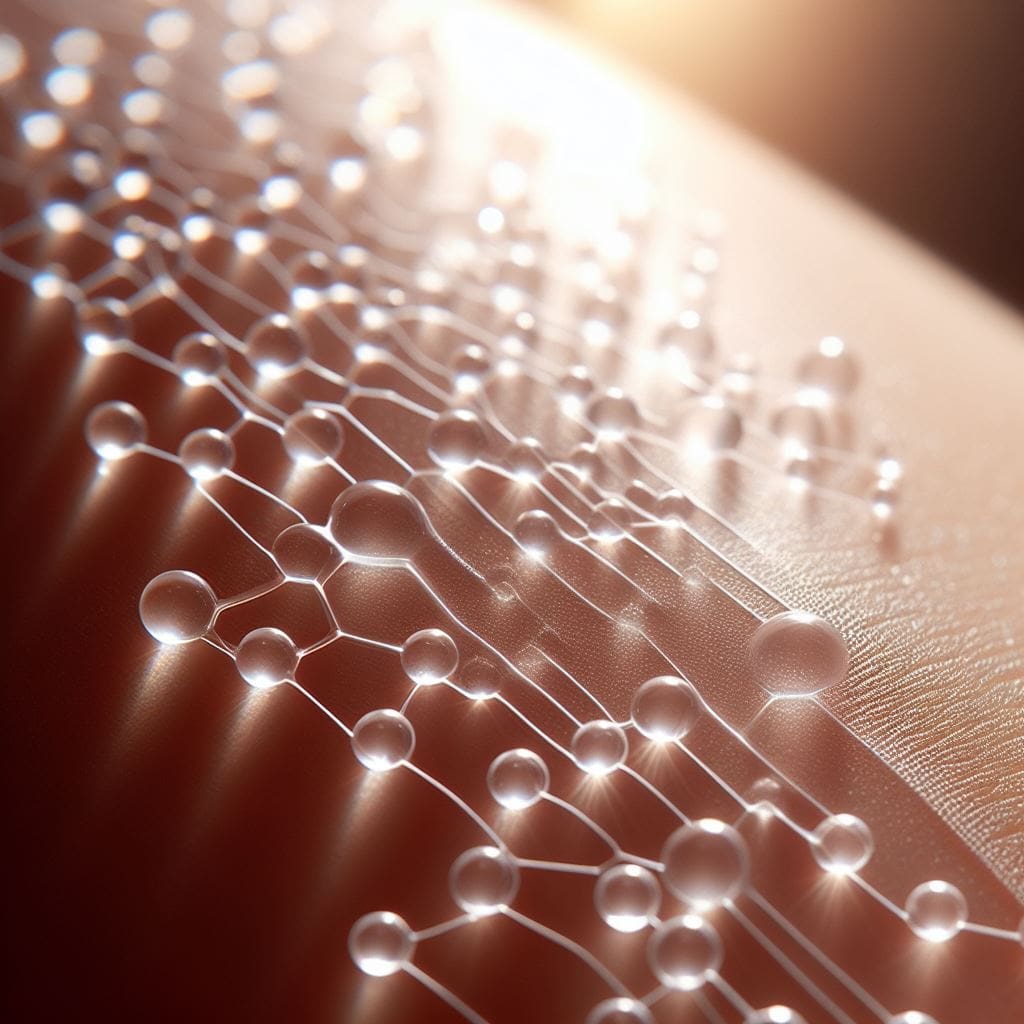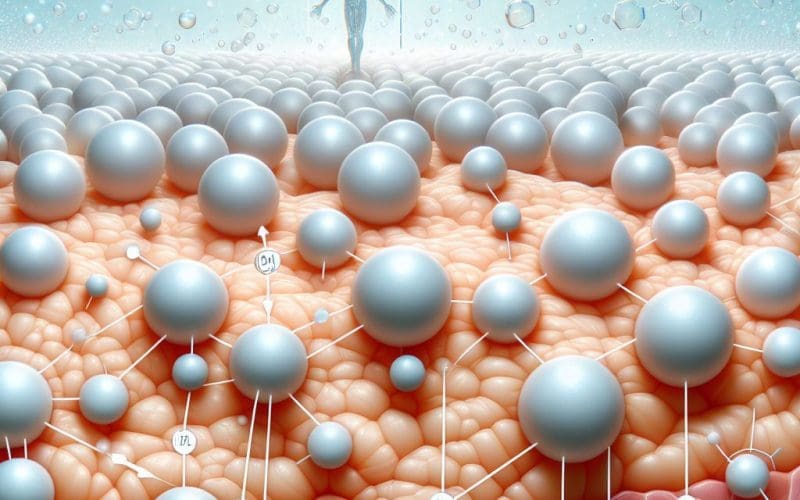The side effects and allergic reactions caused by cosmetics containing silicon have been talked about repeatedly on various forums. However, there is rarely any counterargument or reference to specific research on this matter.
1. Dirty media
There is an ongoing phenomenon where, if misconceptions spread widely early on, they are eventually recognized by the public as truths.
Many organizations and forums, such as EWG Skin Deep® or Campaign for Safe Cosmetics, deliberately release misleading and incomplete information, cunningly and intentionally, over an extended period of time (similar to dirty political campaigns) to discredit products containing silicon derivatives.
So, let’s uncover the truth about silicon in cosmetics. Is it as alarming as we have been hearing all this time?
If EWG’s shenanigans weren’t already repulsive enough!
2. Basic knowledge
Let’s categorize silicon into two basic application groups. One group is for industrial purposes, and the other is for use in the healthcare sector (specifically cosmetics).
Industrial-grade silicon types have various negative impacts on health, as they are markedly different from cosmetic silicon. Health and industrial organizations have long-established strict regulations regarding the use of industrial-grade silicon, outlining their adverse effects on the human body.
In the cosmetics industry, the term “silicon” refers to a group of synthetic compounds containing this element. Silicon is a component found in over 90% of the minerals that make up the Earth’s crust.
Silicon polymers, specifically silicon-carbon synthetic polymers, were first introduced in the 1950s. Compounds of this kind possess unique characteristics that help improve the appearance, function, and performance of cosmetics. Since then, derivatives of silicon have been continuously researched up to the present day.

3. Dispelling some misconceptions about the use of Silicon
Misconceptions 1st
“Cosmetic grade silicone will irritate skin, cause allergic reactions and clog pores“
Problem solving:
Synthesized cosmetic grade silicones are derived from mineral components known to have extremely low allergen occurrences.
We need to clarify a term that is often printed on products and displayed in advertisements. That term is “hypoallergenic”. In reality, products advertised as such can still cause allergies, but the incidence is relatively low. No matter how carefully formulated, there will always be a portion of customers who cannot use a product, often attributed to individual differences in body response. Reputable brands typically include a disclaimer such as “Product efficacy may vary depending on individual body responses” on packaging and advertising materials.

Cosmetic grade silicones have a molecule size that is too large to enter or clog a human pore.The distance between the molecules is large enough to create ventilation, allowing other nutrients to penetrate the skin.
The most basic silicone in cosmetics is Dimethicone, in liquid form, the thickness depends on the length of its polymer molecule. Next to it is Cyclomethicone which has many similar properties to Dimethicone except it evaporates while dimethicone does not.
In skin care products, Cyclomethicones is often used as a carrier agent thanks to its fast evaporation properties. It also helps creams become soft and smooth, easy to apply without stickiness.
Dimethicone’s molecular structure contains an -OH group making it more soluble in water. This property makes it easy to mix into products containing water, but at that time its performance is reduced.
In makeup products (foundation, concealer), Dimethicone is often used because it does not evaporate and stays on the skin longer. Dimethicone locks the color molecules on the skin, preventing the color molecules from penetrating the skin, ensuring true and durable color tones.
This is why silicone based makeups are ideal for acne prone or other sensitive skin types. They are especially good for “post cosmetic surgery” patients during recovery. Because other emulsions (glycerine, mineral oil / vegetable oil / nut oil) have very small molecular sizes, capable of pulling color molecules into pores and causing blockage, pimples.
NOTE: The American Academy of Dermatology recommends cosmetic grade silicone as “a helpful ingredient in makeup products like foundation. For cystic acne and rosacea patients, silicone-based makeup might reduce skin redness, stinging or irritation.”
Additional
Hospitals and medical facilities mainly use medical adhesives (bandages, gauze, etc.) based on SILICONE because it has an extremely low rate of allergic skin reactions, as opposed to latex-based medical adhesives that were used in the past. (You can absolutely find scientific statistics on the prevalence of latex allergy.)
As a reminder: Medical practitioners agree that silicone-based medical adhesives are safe for use near open wounds. Have you found this evidence convincing enough about the safety of silicone in cosmetics?
Misconceptions 2nd
“Cosmetic grade silicone is a health hazard when inhaled”
Problem solving:
It’s tiring to hear baseless hysteria surrounding the safety of silicone airbrush makeup.
The cosmetic-grade silicone used to create airbrush makeup products is totally safe, even when airborne and inhaled. However, it is not uncommon for brands to deploy scare advertising campaigns, saying that their products are safer than other products. The way they often use it is to intentionally give incomplete information.
Brands, unscrupulous advertisers, and interest groups will cite danger warnings about industrial silicones and spread them in the media – but conveniently fail to mention that these hazards DO NOT apply to the silicones used in cosmetic products.
4. Give up baseless thinking
People need to abandon guesswork and use scientific research when discussing cosmetic ingredients. Keep your stance, don’t rush to conclusions without verifying the information. Knowledge is power.
5. References for this information
1. Current Topics in Microbiology and Immunology, Volume 210, 1996, pages 3-12
2. Environmental International, November 2015, pages 55-63
3. International Journal of Toxicology, May 2014 Supplement, pages 65S-115S
4. Scars, Burns, and Healing, August 2019, ePublication
5. Frontiers in Pharmacology, May 2016, ePublication
6. Skin Pharmacology and Physiology, February 2014, pages 164-171
7. Therapeutic Delivery, July 2015, ePublication
8. Cutis, October 2008, pages 281-284
9. The Journal of Clinical and Aesthetic Dermatology, May 2014, pages 36-44
10. British Journal of Nursing, May-June 2014 Supplement, pages S34-S37
11. International Journal of Toxicology, December 2017, ePublication
12. Toxicology Letters, October 2017, Pages 2-22
13. Regulatory Toxicology and Pharmacology, November 2012, Pages 305-314
14. Regulatory Toxicology and Pharmacology, February 2016 Supplement, pages S67-S76
15. International Journal of Toxicology, December 2011 Supplement, pages 149S-227S
16. Silicone chemicals in cosmetics applications and their implications to the environment, health and sustainability, October 2022, page 5
